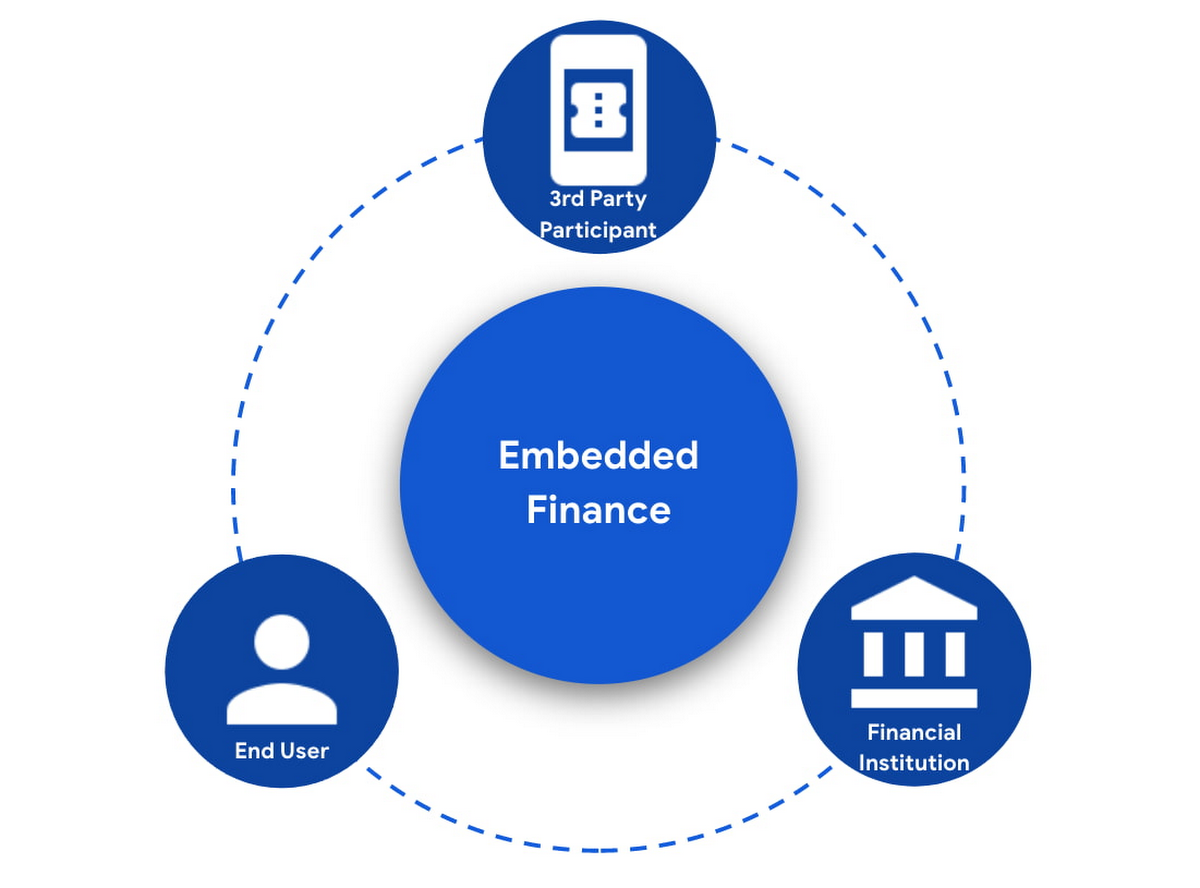The Future of Finance: Unveiling the Power of Embedded Finance

In today's rapidly evolving digital landscape, the concept of embedded finance has emerged as a game-changer in the financial industry. With seamless integration into everyday products and services, embedded finance has revolutionized the way we transact, manage our finances, and interact with financial institutions. In this blog article, we will delve into the depths of embedded finance, its impact on various sectors, and the boundless opportunities it presents.
Embedded finance refers to the integration of financial services into non-financial platforms, products, or services. This disruptive phenomenon has gained significant momentum, making traditional financial institutions rethink their strategies and partnerships. By eliminating the need for consumers to rely solely on banks or fintech companies for financial services, embedded finance empowers businesses across various industries to offer personalized and seamless financial experiences to their customers.
1. Unveiling the Concept of Embedded Finance
In this section, we will explore the definition and core principles of embedded finance. We will uncover how it differs from traditional financial services and highlight its potential to transform the way we perceive and access financial products.
2. The Rise of Embedded Finance in E-commerce
This section will focus on the transformative impact embedded finance has had on the e-commerce sector. From simplified checkout processes to tailored financing options, we will discuss how embedded finance has revolutionized online shopping experiences.
3. Embedded Finance in the Transportation Industry
Here, we will delve into how embedded finance has revolutionized the way we pay for transportation services. From ride-hailing apps to electric vehicle charging stations, we will explore the innovative solutions embedded finance brings to this sector.
4. Embedded Finance and the Future of Real Estate
In this section, we will discuss how embedded finance is reshaping the real estate industry. From streamlining mortgage applications to facilitating property investments, embedded finance is creating new opportunities and enhancing transparency within the market.
5. The Impact of Embedded Finance on Small Businesses
This section will shed light on how embedded finance is leveling the playing field for small businesses. We will explore the benefits of integrated financial services for entrepreneurs and discuss how these solutions are fostering growth and innovation in the SME sector.
6. The Potential Risks and Challenges of Embedded Finance
While embedded finance offers immense opportunities, it is crucial to address the potential risks and challenges associated with this disruptive trend. In this section, we will discuss topics such as data security, regulatory concerns, and the need for consumer protection.
7. Embedded Finance and Financial Inclusion
One of the remarkable aspects of embedded finance is its potential to promote financial inclusion. In this section, we will explore how embedded finance is bridging the gap between the unbanked population and financial services, empowering individuals and communities worldwide.
8. The Role of Big Tech in Embedded Finance
Here, we will delve into the involvement of tech giants in embedded finance. We will discuss how companies like Apple, Amazon, and Google are leveraging their vast user bases and technological prowess to disrupt the financial sector.
9. The Future of Embedded Finance: Predictions and Trends
In this section, we will explore the future prospects and emerging trends in embedded finance. From decentralized finance (DeFi) to blockchain integration, we will discuss how these advancements will shape the financial landscape and transform our financial experiences.
10. Embracing the Embedded Finance Revolution
In this final section, we will conclude by highlighting the importance of embracing the embedded finance revolution. We will emphasize the need for financial institutions, businesses, and consumers to adapt to this evolving ecosystem and seize the numerous opportunities it presents.
In conclusion, embedded finance has emerged as a disruptive force, transforming various sectors and revolutionizing the way we access and interact with financial services. With its potential to drive financial inclusion, empower small businesses, and reshape traditional industries, embedded finance is set to redefine the future of finance as we know it.
Question and Answer:
Q: How does embedded finance differ from traditional financial services?
A: Embedded finance differs from traditional financial services by integrating financial offerings seamlessly into non-financial platforms or services, eliminating the need for consumers to rely solely on banks or fintech companies for financial transactions.
Q: How can embedded finance promote financial inclusion?
A: Embedded finance has the potential to promote financial inclusion by bridging the gap between the unbanked population and financial services. By providing accessible and tailored financial solutions through non-financial platforms, embedded finance empowers individuals who previously lacked access to traditional banking services.
Q: What are the potential risks of embedded finance?
A: Some potential risks associated with embedded finance include data security concerns, regulatory challenges, and the need for consumer protection. As financial services become embedded in various platforms, it is crucial to address these risks and ensure the safety and privacy of user information.
Q: How are big tech companies involved in embedded finance?
A: Big tech companies, such as Apple, Amazon, and Google, are leveraging their vast user bases and technological capabilities to disrupt the financial sector. They are integrating financial services into their platforms, offering seamless transactions and personalized financial experiences to their users.
Q: What does the future hold for embedded finance?
A: The future of embedded finance is promising, with emerging trends like decentralized finance (DeFi) and blockchain integration shaping the financial landscape. These advancements will continue to transform our financial experiences, offering new opportunities and challenges for financial institutions, businesses, and consumers.
Post a Comment for "The Future of Finance: Unveiling the Power of Embedded Finance"